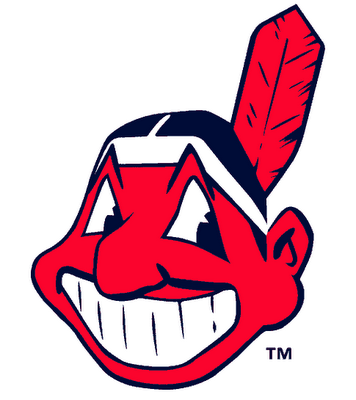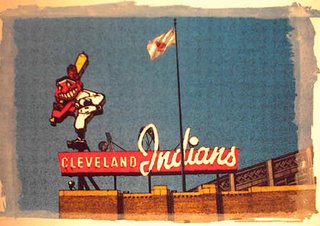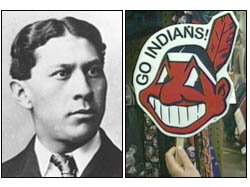 According to the Cleveland Indians organization, its mascot, Chief Wahoo, was not created to offend American Indians, but to honor them. The team says both the team name and Chief Wahoo pay homage to an early baseball player, Louis Sockalexis, one of the first American Indians to play professional baseball.
According to the Cleveland Indians organization, its mascot, Chief Wahoo, was not created to offend American Indians, but to honor them. The team says both the team name and Chief Wahoo pay homage to an early baseball player, Louis Sockalexis, one of the first American Indians to play professional baseball.Born in 1871 on a Maine reservation, Sockalexis rose to become a college baseball superstar at Holy Cross and Notre Dame.
Then called the Cleveland Spiders, the professional National League organization signed Sockalexis, a Penobscot Indian, in 1897. His first season, Sockalexis batted .338 with eight triples and 16 stolen bases.

Racism wasn't a stranger to the baseball stadiums. Spectators would shout racial slurs and emulate war dances at him when he was up at bat.
Later that year, his promising career was cut short by an ankle injury, which occurred when a drunk Sockalexis jumped from a second-story window at a party. The injury forced him to an occasional appearance on Cleveland's lineup for the next two seasons. His baseball career was over by age 27.
The injury prompted press reports to cite another American Indian stereotype — alcohol abuse — as the reason his career ended.

In 1915, two years after Sockalexis died at age 42, the Cleveland team — no longer called the Spiders but the Naps — changed its name to the Cleveland Indians.
The ballclub maintains that the name change was to honor Sockalexis, though critics doubt the motive.

In 1948, the Indians' owner at the time, Bill Veeck, commissioned a 17-year-old named Walter Goldbach to design a mascot. The result: an orange-faced Indian with a large nose and big teeth later dubbed Chief Wahoo.
The image underwent several revisions in the next several decades in an attempt to quell complaints from American Indians that the caricature was racist.
In 1973, then-owner Nick Mileti asked for another revision to give Chief Wahoo a more politically correct look. That logo lasted for almost 10 years before more revisions eventually paved the way to the current Chief Wahoo.

Chief Wahoo Rubber Toy from the 1950s.
Chief Wahoo's MySpace Page
Anti-Chief Wahoo Site

No comments:
Post a Comment